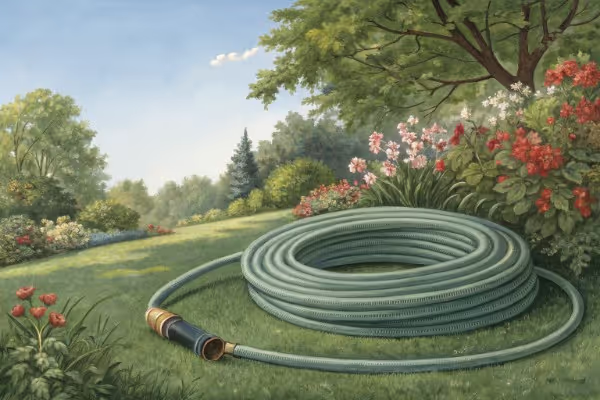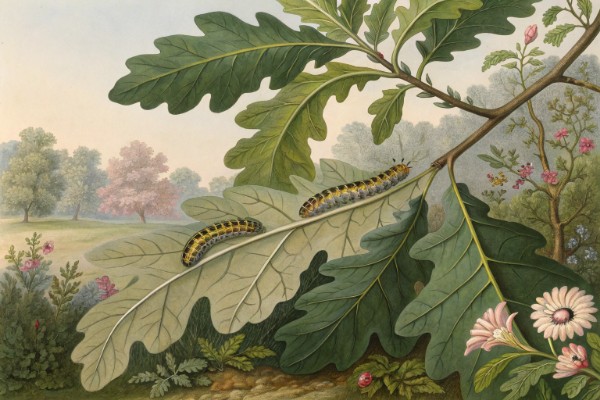Flea Beetles: Proven Strategies to Protect Your Garden Now

Flea beetles
Flea beetles chew tiny holes in seedlings and can wreck your young veggies fast. Get ahead of these hungry jumpers by scouting your beds and spotting flea beetles before they multiply. A little vigilance and the right strategy let you outsmart flea beetles and save your crop.
Stick around for tips on blocking their advances and reclaiming your garden from these pesky leaf-punchers.
Cheatsheet: Outsmarting Flea Beetle Damage
🧿 Know the Signs
- Pinholes in leaves, especially young plants
- Black, bronze, or striped beetles jump when disturbed
- Peak activity: 50-95°F (10-35°C), late spring
🌿 Prevention Tactics
- Plant early or use transplants for stronger starts
- Rotate crops (minimum 1 year) to break life cycle
- Mulch with straw or wood chips to limit beetle movement
- Remove weeds, especially nightshade family hosts
- Floating row covers (remove for pollination)
⚡ Quick Response
- Hand-pick beetles early morning
- Dust diatomaceous earth on leaves after dew dries
- Spray neem oil weekly (1% solution)
- Yellow sticky traps catch adults
🛠️ Tools and Products You'll Need
- Row covers or insect netting
- Diatomaceous earth
- Neem oil
- Hand trowel, gloves
- Organic mulch
- Sticky traps
🍃 Boost the Plant’s Strength
- Water deeply, stress attracts pests
- Apply fish emulsion or seaweed feed
- Plant trap crops: radish can lure beetles away from crops
🌱 Health & Self-Sufficiency Impact
- Unchecked, flea beetles slash yields by up to 80%
- Prevention means more nutrient-dense greens, less chemical use
- Protect brassicas, eggplant, potatoes for reliable home harvests
Flea Beetles: Tiny Pests, Big Appetite
Picture this: Swiss chard leaves riddled with pinprick holes, like miniature shotgun blasts. Early spring, I once watched my arugula vanish faster than a free beer on a Friday. The culprit? Flea beetles.
What Are Flea Beetles?
These minuscule, jumping beetles belong to the Chrysomelidae family. Adults rarely top 1/8 inch (3 mm), but their trademark leap could shame a grasshopper. Their armor: glossy black, bronze or metallic blue.
They overwinter in soil and plant debris. Once soil temps warm above 50°F (10°C), they're out, ready to feast. Cornell’s Integrated Pest Management Program pegs them as “one of the earliest and most damaging spring insect pests” (source: Cornell IPM).
Recognizing Flea Beetle Damage
I’ve seen seedlings pummeled so badly by flea beetles that only skeletons remain. Look for:
- Small, round holes (shot-holing) scattered across leaves
- Stunted, wilted, or dead seedlings, especially in brassicas and solanaceous crops
- Brown trails on tubers (larval feeding), especially in potatoes
Eggs and larvae lurk below the surface, so you rarely see them, but the adults broadcast their mayhem above ground.
Crops at Risk
- Arugula, mustard, radish, turnip, kale (brassicas)
- Eggplant, tomato, potato (nightshades)
- Corn, beans, spinach
Seedlings face the harshest fate. Mature plants can often outgrow moderate damage.
Top Strategies to Outwit Flea Beetles
1. Row Covers: The Old Standby
Floating row covers, like Agribon, provide a physical barrier. Install immediately after seeding. Remove only for pollination. Fasten edges tight: flea beetles slip through gaps smaller than their own ego.
2. Timing and Trap Crops
Get clever: sow main crops after temperatures rise past flea beetle peak, or use trap crops like radish or Chinese mustard. Sacrifice these to lure beetles, then destroy them. It’s a bit like baiting a mousetrap with peanut butter, but the stakes are higher.
3. Organic Sprays
- Neem oil: Disrupts feeding, but apply with care—overuse burns foliage and disrupts pollinators.
- Pyrethrin: Derived from chrysanthemums. Potent, but degrades quickly in sunlight. Use sparingly and in the evening.
- Kaolin clay: Forms a fine dust barrier beetles hate. Needs frequent reapplication after rain.
"Flea beetles are responsible for up to 80% seedling loss in untreated organic fields during peak years."
University of Minnesota Extension, 2022
4. Soil Management
Rotate crops every year. Remove garden debris and till in fall to expose overwintering adults. Mulch heavily: adult beetles struggle to find their target if soil is covered and moist.
5. Biological Controls
Release beneficial nematodes (Steinernema spp.) to target larvae in soil. Encourage native predators—ground beetles, lacewings, and birds—by planting diverse borders.
Best Products for Flea Beetle Control
- Floating row cover fabric (e.g., Agribon-19): Lightweight, breathable, reusable for several seasons.
- Neem Oil Concentrate: Useful for spot-spraying new infestations.
- PyGanic Pyrethrin Spray: OMRI Listed, effective as a knockdown but hard on bees.
- Kaolin Clay (Surround WP): Shields leaves but requires diligence in reapplying.
- Sticky traps: Yellow or blue cards help monitor populations, but aren’t a silver bullet.
Frequently Asked Questions
How do I identify flea beetles?
Look for tiny, shiny beetles jetting away as you approach plants. Damaged leaves display countless pinholes.
Do flea beetles bite people?
No. They feast solely on plant tissue, thankfully.
Can I eat vegetables with flea beetle holes?
Absolutely. The flavor’s unchanged—just wash thoroughly. I once served a holey arugula salad to a chef who called it “rustic charm.”
When are flea beetles most active?
Spring and early summer, as new seedlings emerge. Hot, sunny days bring them out in droves.
Comparison: Organic vs Conventional Flea Beetle Control
- Organic: Relies on exclusion (row covers), crop rotation, and OMRI-approved sprays. Safer for pollinators and soil health.
- Conventional: Often uses systemic insecticides like imidacloprid. Highly effective, but can harm beneficials and increase resistance.
Our garden club once ran a side-by-side trial: OMRI sprays plus covers prevented 95% of visible damage with less labor than conventional sprays, but required near-daily vigilance after storms.
Curious what might work best for your patch? Get personalized, step-by-step flea beetle strategies from Taim.io, tailored to your crops and climate.
Final Thoughts: Control, Don’t Annihilate
I’ve learned to respect flea beetles as a rite of passage. If you spot a few, don’t panic. Monitor, intervene early, and focus on seedling defense. Nothing feels quite as satisfying as harvesting a flawless bok choy where flea beetles bounced, then failed.

Want smarter plant choices? 🪴
Frequently Asked Questions About Managing Flea Beetles
How can I identify their feeding damage?
Look for tiny, round holes in the leaves of your plants, often giving foliage a shotgun-like appearance. Young seedlings suffer the most, sometimes losing large portions of their leaf surface. Certain species create iridescent trails as they feed on brassicas, eggplants, and other vulnerable crops.
What weather conditions favor their activity?
Flea beetle populations thrive in warm, dry weather. Most activity occurs when daytime temperatures reach above 65°F (18°C). Cool, wet conditions can reduce movement and feeding, but a stretch of warm, sunny days quickly boosts their numbers.
Which vegetable crops face the highest risk?
Plants in the brassica family such as arugula, radish, broccoli, kale, and cabbage attract frequent attacks. Nightshades like tomato, eggplant, and potato also attract certain species. Young transplants and recently sown seedlings face the greatest risk during the first few weeks of growth.
How do row covers protect young plants?
Applying a lightweight floating row cover forms a barrier that physically blocks flea beetles from reaching your crops. This technique works best when you install the cover directly after sowing or transplanting, and when the edges have a tight seal against the soil.
Which cultural practices suppress outbreaks?
Rotate susceptible crops each season, clear away debris after harvest, and cultivate the soil in late autumn to destroy overwintering adults. Avoid planting new crops near areas where last year’s infestations occurred. Encourage natural predators by maintaining diverse plantings and minimizing chemical use.
Can trap crops reduce overall damage?
Planting highly attractive species, such as radish, as a trap crop can draw beetles away from your main vegetable beds. Once the trap crop holds significant numbers, remove and destroy infested plant matter or treat only those sections, helping to lower pressure on primary crops.
Do organic sprays offer effective results?
Products containing neem oil or pyrethrin can reduce beetle numbers, especially when timed for early mornings or late afternoons. Reapply after rainfall or overhead irrigation. Always follow manufacturer recommendations and focus sprays on young plants and areas with visible feeding.
Flea beetles show up early, hungry and quick, punching holes in your young plants before you’ve had your morning coffee. They’re stubborn, but not invincible. Keep your soil healthy, rotate your crops, and use row covers right from the start. If you want to grow crops with fewer pesticides, timing and vigilance matter more than any spray. Don’t let up on weeding and mulching. Water deeply, not just a sprinkle—roots need a reason to dig down. If you’re losing plants and can’t figure out why, check out why vegetable plants keep dying. Flea beetles are part of the deal when you grow your own food, but with a watchful eye and a few old-school tricks, you’ll keep their damage in check and your harvest strong.
Organic Mastery: Flea Beetle Suppression Tactics
Flea beetles can strip seedlings to lace within hours—one June outbreak can halve your brassica yield. Yet, a mix of precise timing, plant choices, and soil techniques can reduce their impact without chemicals. Crop resilience grows with each season of attention.
Intervention Timing
- Seedling Protection: Deploy row covers before beetles emerge—typically when soil reaches 50°F (10°C). Remove during flowering for pollination.
- Trap Cropping: Sow mustards or radish two weeks prior to your cash crops. Replace or destroy trap plants when beetles mass on them; repeat if pressure remains high.
Plant Partnerships
- Biofumigants: Grow arugula, mustards, or marigolds nearby and till under before flowering. Their glucosinolates disrupt beetle lifecycles below ground.
- Mixed Rows: Alternate brassicas with strong-scented herbs (dill, cilantro) to mask host cues and slow feeding rates.
Soil-Based Suppression
- Biological Allies: Release Steinernema nematodes at dusk—once soil hits 60°F (15.5°C). They seek out overwintering larvae in spring and fall.
- Mulching Strategy: Fine straw or hardwood mulch (2 in/5 cm) impedes beetle movement and moderates soil temp swings, reducing egg hatch synchrony.
Nutrition and Self-Sufficiency
- Yield Advantage: Consistent control preserves young leafy greens—critical for vitamin K and folate. Healthy spring greens can supply 80% of daily vitamin C needs per serving.
- Seed Saving: Protecting seed brassicas from defoliation secures next year’s adapted genetics. Flea beetle-tolerant strains improve resilience in future crops.
Integrated approaches build long-term vigor. Each small step increases your soil’s stability and your harvest’s diversity.
Find out which plants will thrive in your garden!
Answer a few fun questions and get custom plant recommendations perfect for your space. Let’s grow something amazing together!

start your season





